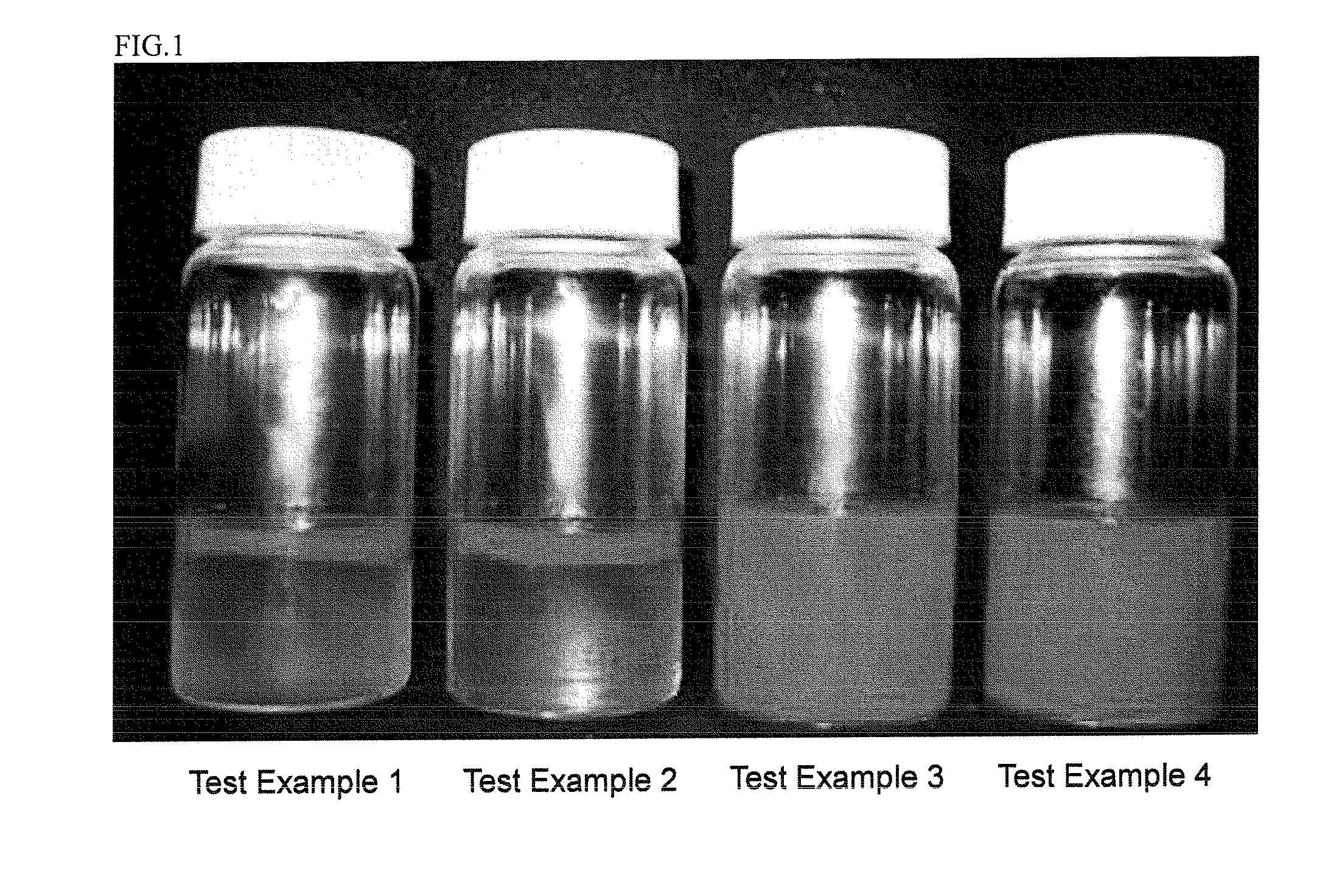Lip Cosmetics
a cosmetic and lip technology, applied in the field of lip cosmetics, can solve the problems of conventional lip cosmetics, secondary adhesion, and the inability to feel in use in liquid state, and achieve the effects of good gloss, good stability, and maintaining post-application secondary adhesion resistan
- Summary
- Abstract
- Description
- Claims
- Application Information
AI Technical Summary
Benefits of technology
Problems solved by technology
Method used
Image
Examples
examples
[0068]The present invention will be further described in the following examples. However, the invention is not limited by these examples. Unless otherwise specified, the blending quantity of each component will be expressed in mass %.
[0069]Prior to illustrating the examples, the methods for the evaluation tests used in the present invention will be explained.
(1) Evaluation Test of the Separation State of (a) and (b)
[0070]The separation state of (a) and (b) (or silicone oil) was measured under the following conditions. If the separation did not take place at 90° C. and the separation took place at 25° C., it was denoted “A” and others were denoted “C”.
(Measurement Condition)
[0071]A Mixture of (a) and decamethylcyclopentasiloxane (1:1 mass ratio) was prepared. This mixture was used in the ratio (mixture:(b)=1:2 (mass ratio)) and mixed with stirring at 90° C. The mixture was allowed to stand at room temperature (25° C.). When the boundary was uniformly separated into two layers, it was...
examples 1 to 17
, Comparative Examples 1 to 11, and Reference Example
[0078]Lipsticks were prepared, by the normal method, according to the formulations shown in the following Tables 1 to 6, and they were evaluated based on the above-described criteria. The results are shown in Tables 1 to 6. Glyceryl monoisostearate was produced by the normal method, and the actual amount was calculated from the amount of the purified one with a purity of 98%.
[0079]In the examples and reference examples in Tables 3, 4, and 6, the evaluation results for the separation state of (a) and (b) were all “A”.
TABLE 1ComparativeComparativeComparativeComparativeExample 1Example 1Example 2Example 3Example 4Example 2(a)Glyceryl monoisostearate14 14 14 14 14 14 (b)Trimethyl pentaphenyl trisiloxane71 ————40 (viscosity: 165 mPa · s) 1Diphenyl dimethicone—71 ———30 (viscosity: 400 mPa · s) 2Diphenylsiloxyphenyl trimethicone——71 ———(viscosity: 14 mPa · s) 3Dimethylpolysiloxane 100cs———71 ——Dimethylpolysiloxane 6cs————71 —Coloring ...
formulation example 1
[0101]
Blending componentsmass %(1) Glyceryl monoisostearate (purity: 98%)14(2) Trimethyl pentaphenyl trisiloxane (Methyl phenyl sili-71cone FZ3156 (manufactured by Dow Corning Toray Co., Ltd.))(3) Coloring material7(4) Polyethylene wax4(5) Ion-exchanged water3(6) Glycerin1
Production Method:
[0102]Components (1) to (4) were mixed at 90° C., and warmed components (5) and (6) were added and mixed. The deaeration and filling were carried out and then it was cooled.
PUM
| Property | Measurement | Unit |
|---|---|---|
| mass % | aaaaa | aaaaa |
| temperature | aaaaa | aaaaa |
| temperature | aaaaa | aaaaa |
Abstract
Description
Claims
Application Information
 Login to View More
Login to View More - R&D
- Intellectual Property
- Life Sciences
- Materials
- Tech Scout
- Unparalleled Data Quality
- Higher Quality Content
- 60% Fewer Hallucinations
Browse by: Latest US Patents, China's latest patents, Technical Efficacy Thesaurus, Application Domain, Technology Topic, Popular Technical Reports.
© 2025 PatSnap. All rights reserved.Legal|Privacy policy|Modern Slavery Act Transparency Statement|Sitemap|About US| Contact US: help@patsnap.com



